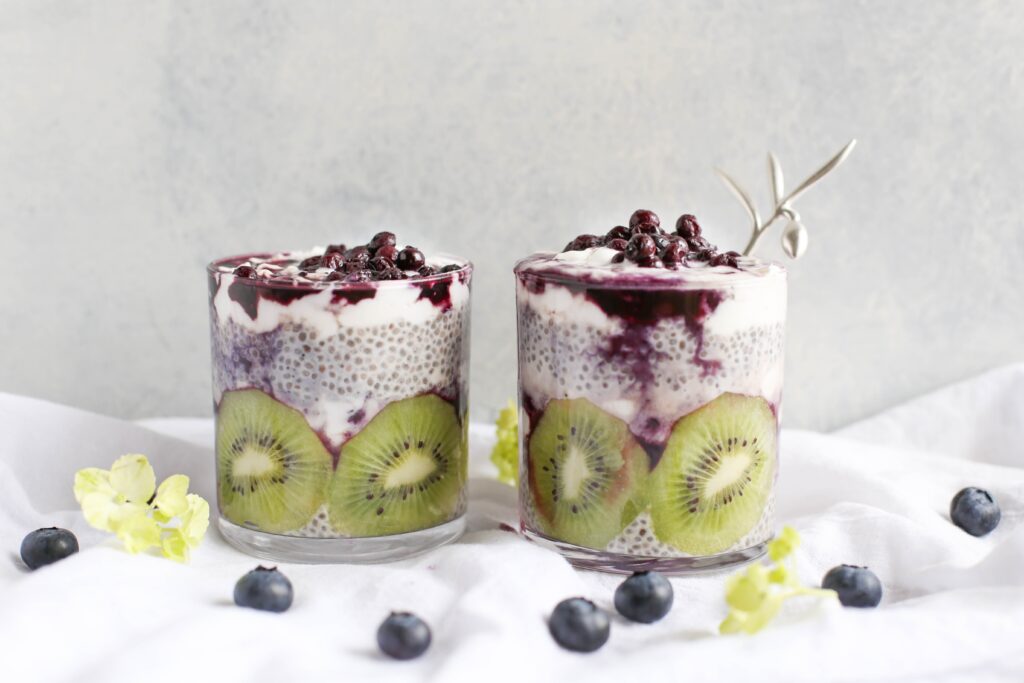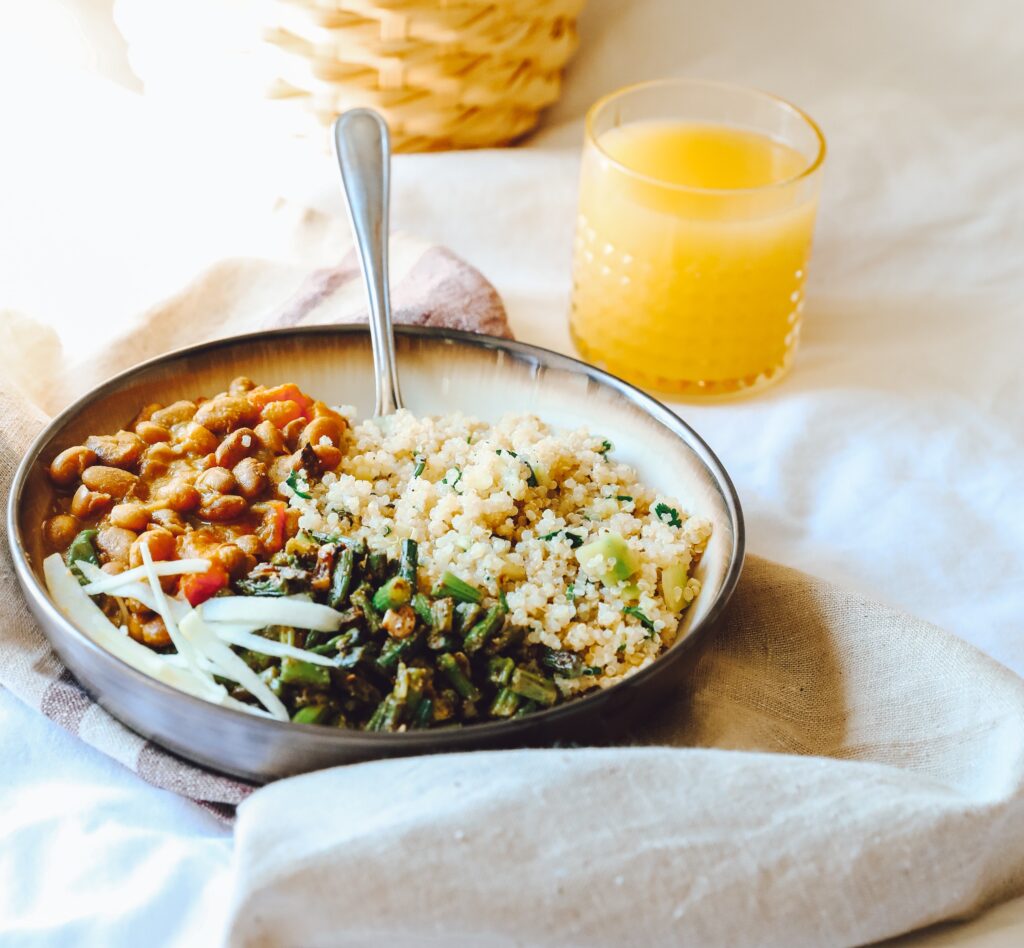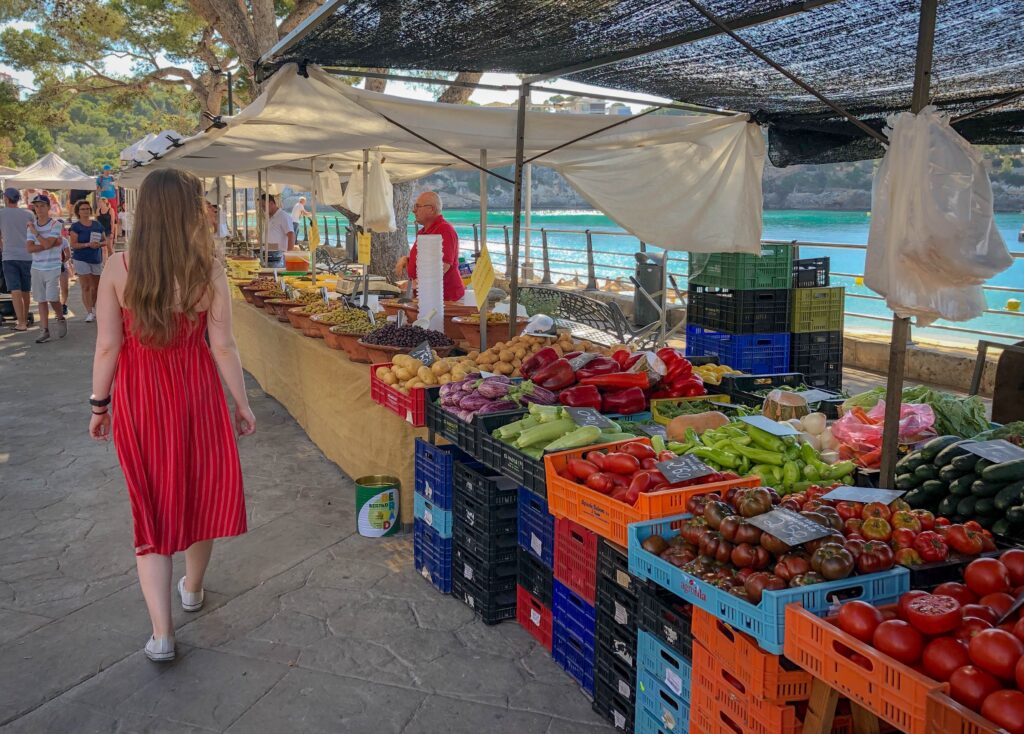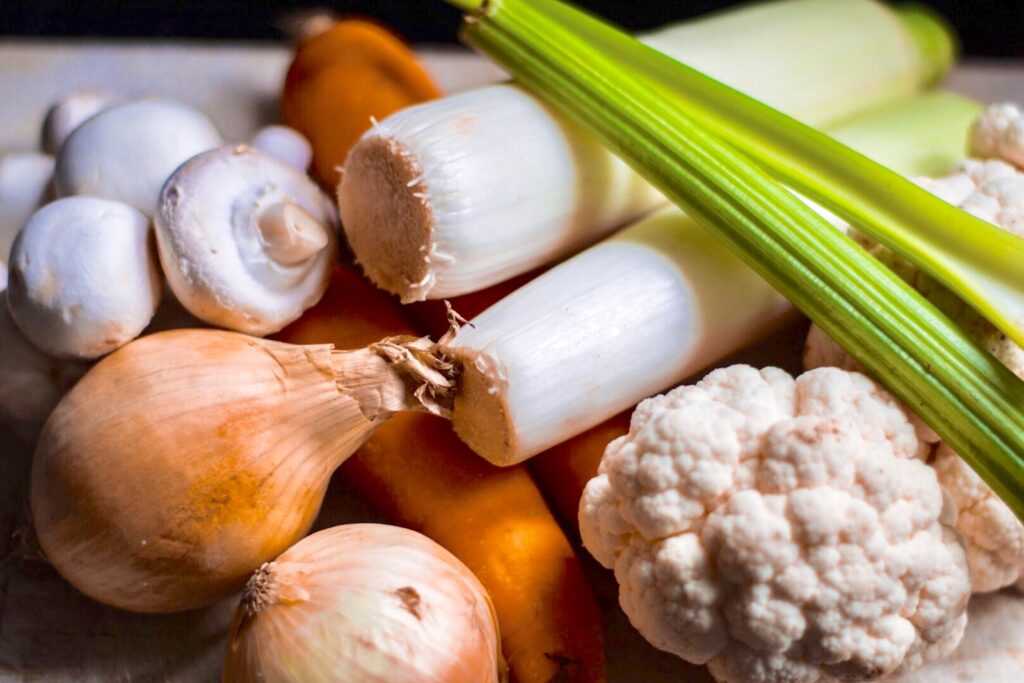Did you know that we aren’t able to break down or directly use fiber? That’s right, fiber is entirely food for the trillions of microbes in our gut, called our gut microbiome! They eat the fiber, and make by-products called short chain fatty acids (SCFAs) that, among many benefits, are incredibly anti-inflammatory and immune-supportive. That means that when we eat fiber, we are eating for our friendly gut neighbors who turn it into something to improve our health. It is an amazingly symbiotic relationship that has existed as long as humans have. The best part is that we get to nurture this relationship every single time we eat!
Fiber is an important topic for everyone, but especially for celiac and gluten-sensitive individuals because gluten-free diets are more likely to be deficient in fiber. Additionally, most of us gluten-free folks have to put in some extra TLC and work into our gut health, and fiber is one piece of that.
Two Main Types of Fiber:

There are two main types of fiber: soluble and insoluble. Many plant foods are mixes of both, though they usually favor one type over the other.
Soluble sources include oats, fruit (especially apples, citrus, and pears), ground flax seeds, beans, nuts, and chia seeds. Soluble fiber:
- Contributes to feeling of fullness and decreases appetite.
- Slows the absorption of carbohydrates, which can balance blood sugar.
- Helps to lower cholesterol and triglycerides.
- Holds water (which can help constipation)
- Satiety
- Feeds (is fermented by) gut bacteria
Insoluble sources include whole grains, cauliflower, green beans, carrots, tomatoes, legumes, nuts, and potatoes. Insoluble fiber:
- Aids in elimination of toxins.
- Poorly fermented by gut bacteria
- Can help speed up transit time and may prevent constipation.
This does NOT mean that loading up on insoluble fiber will fix your constipation. A diet of mostly insoluble fiber can actually cause constipation too, because you don’t have the complimentary bulk of soluble fiber helping to push things through.
Ultimately, it’s all about balance. Finding the right balance for your individual body can help regulate bowel movements and improve digestive issues.
Benefits of Fiber:
In addition to being food for our gut microbes, who use it to preserve a healthy gut lining, balance our immune response, and lower inflammation, fiber can also…
- Keep us fuller longer
- Help regulate blood sugar
- Bind bile to help eliminate toxins and cholesterol
- Regulate bowel movements
Higher fiber diets are also strongly associated with lower risk of some cancers, cardiovascular disease, and Type II Diabetes.
How much Fiber Should We Be Eating?
Ancestral people and hunter-gatherers consistently ate at least 100g – 150g of fiber per day! This is a stark difference from modern Western societies. In the U.S., the recommended daily amount is 25 grams for women and 38 grams for men. Yet, only 5% of the American population achieves this goal. This means that many of our gut microbes are literally starving.
A lack of dietary fiber, and a lack of a diverse array of fiber, is one of the main factors that has caused the extinction of many microbes that used to occupy our gut. Analysis of ancient stool as well as cultures living more ancestral lifestyles today, such as those in Papua New Guinea, Tanzania and the Amazon, show more diverse gut microbiomes with far more species than our own. Of course, lack of fiber isn’t the ONLY reason for this, but it’s a major one.
I typically recommend people slowly work up to include as much fiber in their diet as they can tolerate. This is a process that looks very different for everyone, depending on their starting point and health issues.

Tips for Increasing the Amount of Fiber in Your Diet:
- Take it slow! Those with any gut issues or conditions such as IBS, IBD, diverticulitis, hemorrhoids, etc. should always work with a healthcare professional to do this safely.
- Ensure you’re getting enough water to prevent constipation. A good rule of thumb for daily water intake is half one’s body weight in ounces. For example, a person weighing 200 lbs would need approximately 100 ounces per day of water.
- Fiber only exists in plant foods, so make sure you are including fruits & veggies at every meal
- Choose whole grains instead of refined
- Opt for less processed foods
- Incorporate more beans and legumes (lentils are a great one!)
- Leave the skins on foods like apples and potatoes
- Choose fruit-forward desserts
- Add flax or chia seeds to baked goods, smoothies or yogurt. Or, make chia pudding.
- Substitute avocado for mayo (avocado is both a healthy fat AND a great source of fiber)
It’s Not Just About Quantity
However, when it comes to fiber, our priority shouldn’t just be about increasing quantity. It’s equally as important to consider diversity. For example, a diet with 40 grams of fiber that only includes a handful of different types of fiber would not convey as many benefits as one with 40 grams and many types of fiber. That’s because different microbes need different kinds of fiber from food.
There’s still much we don’t know about the gut microbiome (which is also why it’s such an exciting and dynamic field!). But we do solidly know that fostering diversity in the gut microbiome is one of the most impactful things we can do for the rest of our health.
Less diversity of the gut microbiome has been linked with several conditions, including allergies, asthma, IBD and IBS, colon cancer, metabolic conditions like obesity and Type II Diabetes, as well as cardiovascular disease. Our gut is no different than any other ecosystem, as it thrives in the balance that is only created through having a diversity of species.
Suffice it to say, the path toward cultivating diversity in the gut microbiome is by eating a diversity of fiber.

Tips for Increasing the Diversity of Fiber in Your Diet:
- Focus on eating a colorful array of different vegetables
- Seek out a new fruit or veggie every time you go to the store
- Eat seasonally
- Go to farmer’s markets and pick up new varieties of common foods. See some funky looking heirloom potatoes or a new type of apple? Give it a try!
Prebiotics: A Fancy Name for Some Types of Fiber
Prebiotics are just a fancy name for certain types of fiber that our gut microbes love to eat. The technical term for the way our microbes metabolize these fibers is called fermentation.
Prebiotic foods include:
- Onions
- Garlic
- Leeks
- Mushrooms
- Beans and legumes
- Some nuts (cashews and pistachios)
- Honey
- Chicory root
- Oats
- Jerusalem artichoke
- Asparagus
- Apples
- Watermelon
- Bananas (green or barely ripe)
Note that prebiotics are not the same as probiotics, which refer to the live microorganisms that we ingest either via supplements or fermented foods such as sauerkraut, kimchi, or yogurt.

A diet rich in prebiotics can encourage growth of beneficial microbes in our colon; however, for certain conditions such as some types of IBS, prebiotics can actually exacerbate symptoms! The low-FODMAP diet is often used for people with IBS because it excludes many of these prebiotic fibers, but it is absolutely not meant to be a long-term way of eating (and should be done under guidance), because eventually it can lead to less diversity in the gut microbiome. Remember, diversity in out gut is what we are aiming for.
Also, the prebiotics themselves are NOT at the core of the problem! They are simply revealing a deeper issue. IBS and negative responses to prebiotics show that there is an imbalance in the gut microbiome that needs to be corrected. You don’t need an official diagnosis of IBS either; if you’re reacting to prebiotics with constipation, bloating, gas, or diarrhea, it’s important to start digging, find what is “off” in the gut, and rebalance it. This is what I work with many of my 1:1 clients on! Once the imbalance is corrected, prebiotics should ideally be better tolerated.
Conclusion:
Fiber is food for our gut microbes; they convert it to health-supportive compounds that benefit the gut and beyond. Most Americans are both not getting enough fiber and not getting a variety of fibers. Research has shown that eating a diversity of fibers is the key to cultivating a diverse gut terrain. While there is still to be uncovered about the gut, we know that a diverse gut is the one that confers the most health benefits and is what we should all be aiming for.
Some people with digestive issues (whether a diagnosed condition or undiagnosed yet frequent gas, bloating, constipation, and/or diarrhea) may react to some types of fiber, such as prebiotics. In this case, it’s not the food in and of itself that’s the culprit. It instead means that there is in imbalance in the gut that needs to be resolved.
Cheers to fiber!
